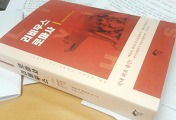
King Muryeong's 'Big Tomb', or the Graveyard of his Clan?
Kim, Tae-shik
The discovery and excavation of King Muryeong's tomb in 1971 has been great help to solve many questions or mysteries concerning the history of Baekje, but at the same time it has brought on many problems. In that respect its discovery was not only a great blessing, especially to historians, but it also remains to a huge agony to them. One of the unsolved problems in relation to the tomb is 'Big Tomb'(大墓 대묘). The two epitaphs excavated in the tomb say the dead bodies of King Muryeong and his wife were shifted to the 'Big Tomb, and buried in it eventually. Almost all of the historians interested in it maintain that the 'Big Tomb' indicate the present King Muryeong's tomb, which is located in the Songsan-ri tomb area, Gongju, the capital of Baekje during the reign of the king(reigning from 501 to 523 A.D.) Nobody has raised any question on that.
But much to their regret, the 'Big Tomb'(大墓) is far away from such an understanding. The expression of the 'Big Tomb', literally meaning 'Big Tomb, makes appearances sometimes in the chinese textual documents of the same age with the period of King Muryeong, or near to it, and more importantly, in the majority of such cases '大墓' does not mean 'Big Tomb', it means the area of tombs or the whole graveyard belonging to a certain clan or family. In brief, the 'Big Tomb' is not a tomb, but a grave area. Therefore the 'Big Tomb' is a collection of many tombs. That means the 'Big Tomb' is a collective noun.
So we can now conclude that the dead bodies of King Muryeong and his wife were shifted to the graveyard of their clan. It can be also great help to the social systems that sustained the dynasty of Baeckje. Its royal familly and high-class clans were operating their family graveyard respectively.

'READING HISTORY' 카테고리의 다른 글
| 신라를 침투한 상앙(商鞅)과 상군서(商君書) (0) | 2018.06.06 |
|---|---|
| 차현 국선암은 어디일까? (0) | 2018.05.27 |
| 世紀세기 혹은 世記세기 혹은 세가世家, 그리고 화랑세기花郎世記 (0) | 2018.03.13 |
| Titus Livius (Livy), The History of Rome, 리비우스 로마사 (0) | 2018.03.10 |
| 먼저 죽은 아우를 위한 형의 통곡 (0) | 2018.02.26 |


댓글